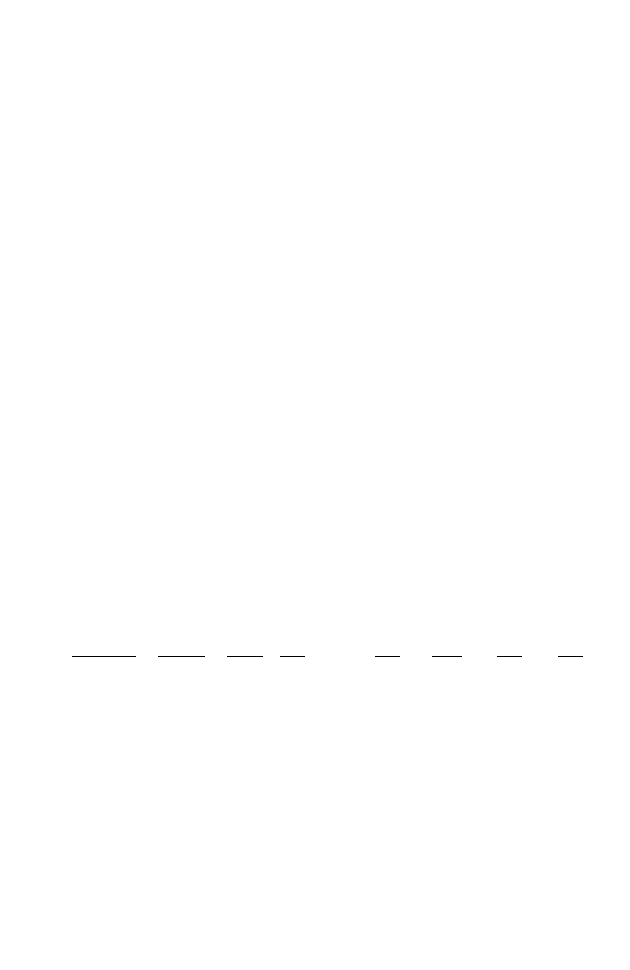
179
A
PPENDIX
B
Binary Numbers
In everyday life, we use the decimal system of numbers.
In decimal, numbers are written using the ten digits 0, 1,
2, 3, 4, 5, 6, 7, 8, and 9. Computers, however, do not use
decimal. Instead, they use binary.
Definition (binary numbers):
Binary numbers are numbers written using
only the two digits 0 and 1, e.g. 110100.
Hint:
Does "base ten" sound familiar? (Think grade school).
Base ten is just another name for decimal. Similarly,
base two is binary.
Just as each digit in a decimal number represents a multiple of
10 (1, 10, 100, 1000, 10,000, etc.), each digit in a binary number
represents a multiple of 2 (1, 2, 4, 8, 16, etc.). For example:
Decimal Binary
1,000's
100's 10's 1's 8's 4's 2's 1's
- - 13 =1101
Also, since binary uses only two digits to represent all numbers, a
binary number has more digits than the same number in decimal.
In the example above, you can see that the decimal number 13 is
the same as the binary number 1101 (8 + 4 + 1 = 13).


















